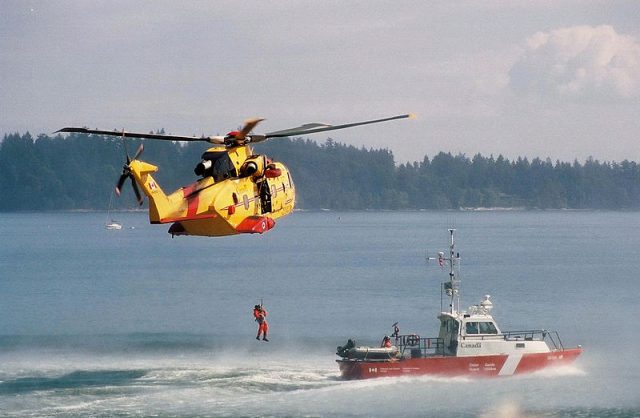FIND Offers Simple Guidance For Lost Person Searches
During the summer months, many people enjoy outdoor activities such as camping and hiking. Search and rescue personnel are also outside, but for a different reason – searching for lost individuals including children and those with mental disabilities and illnesses.
The Department of Homeland Security (DHS) Science and Technology Directorate’s (S&T) First Responders Group (FRG) has been developing and testing a suite of tools designed for first responders deployed during search and rescue operations. Taking its Lost Person Locator (LPL) project to new heights, FRG has been working in partnership with dbS Productions to develop FIND. Two men and a dog look for a lost person in the woods.
The new FIND software uses Lost Person Locator statistics of decisions and patterns made by lost individuals in over 150,000 past cases, known as lost person behavior.

“The FIND app is the latest LPL project to reach the final evaluation phase. It compiles the data on where the person is most likely to be found, based on the common patterns and behaviors of those lost and in distress,” said S&T Program Manager Angela Ervin.
S&T and the dBS team have been partnering to accomplish this final developed suite of tools. “The biggest hurdle is the need to integrate hardware and software to provide intelligent analysis and actionable information,” said Robert Koester, CEO of dbS Productions. “It is no longer enough to have the latest and greatest device or hardware. The information is simply starting to get to be too much to track and actually use. Therefore, the most essential need for search and rescue is the ability to bring everything together so the first responders on-scene can make practical decisions. Integration of information allows the sum to be greater than its parts.”
This past June, search and rescue team professionals took part in exercise that allowed them to test S&T’s FIND first hand in Deschutes County, Oregon.
S&T’s National Urban Security Technology Laboratory (NUSTL) partnered with the Deschutes County Sheriff’s Office to further evaluate FIND software during a fictional plane crash scenario. Together, they conducted an Operational Field Assessment (OFA) of the technology with local search and rescue professionals.
OFAs are a crucial step before prototypes head to the final evaluation stage, which includes feedback from OFA participants.
“One of the main challenges of search and rescue work is the organization of all of the necessary technology and data. There’s one paging system that gathers volunteers, maps resources and team allocations, and then additionally organizes the communications between the active teams in the field and the command. The ability to have a program that fits the majority of those things into one spot is very appealing,” said Lt. Bryan Husband, special services coordinator with the Deschutes County Sheriff’s Office.
“The most appealing thing about the FIND software, as a search and rescue coordinator, is that it helps fill the void that we face on a mission by mission basis. It’s the ability to create a map and task descriptions and then transmit it to the field teams very quickly. It can be tough to generate this map, the tasks, and then get it done in a timely fashion,” said Husband.
Following a pre-scenario instruction by Koester, the field teams used the FIND app’s communications log to track team locations and status updates. A person’s health status, age, experience, access to survival gear, and other factors are analyzed and assembled into specific behavior profiles in the FIND app. “This improves the search and rescue team’s planning and decision making when assessing each type of scenario and places the search team directly into the lost individual’s frame of mind,” said Koester.
The FIND app does not depend on connectivity to the internet because the case studies and programs are already integrated into the app and are available for first responders who are conducting a search ‘off the grid’ or under otherwise challenging circumstances.
The FIND app includes a pre-packaged mapping system that does not require an understanding of geographical-information systems. The result is a simple, easy-to-use interface that allows for collaboration and promotes coherence across all team members.
“We are very happy with the results of the OFA,” said Ervin. “FIND has already been tested in several exercises and proved its ability to improve the search time. The feedback gained from the OFA will be used to enhance the FIND software so search and rescue professionals may enter specific search criteria based on firm data from similar past cases. This could offer a much greater likelihood of a positive outcome.”





